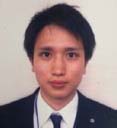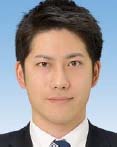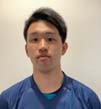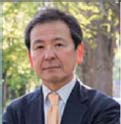|
|
|
| |
| ABSTRACT |
|
Jump performance is affected by warm-up intensity and body temperature, but the time course effects have not been thoroughly investigated. The purpose of this study was to investigate time course effects on jump performance after warm-up at different intensities. Nine male athletes (age: 20.9 ± 1.0 years; height: 1.75 ± 0.03 m; weight: 66.4 ± 6.3 kg; mean ± SD) volunteered for this study. The participants performed three warm-ups at different intensities: 15 min at 80% VO2 max, 15 min at 60% VO2 max, and no warm-up (control). After each warm-up, counter movement jump (CMJ) height, vastus lateralis temperature, heart rate and subjective fatigue level were measured at three intervals: immediately after warm-up, 10 min after, and 20 min after, respectively. Significant main effects and interactions were found for muscle temperature (intensity: p < 0.01, η2p = 0.909; time: p < 0.01, η2p = 0.898; interaction: p < 0.01, η2p = 0.917). There was a significant increase of muscle temperature from the baseline after warm-up, which lasted for 20 min after warm-up with 80% VO2 max and 60% VO2 max (p < 0.01). Muscle temperature was significantly higher with warm-up at 80% VO2 max than other conditions (P < 0.01). Significant main effects and interactions for CMJ height were found (intensity: p < 0.01, η2p = 0.762; time: p < 0.01, η2p = 0.810; interaction: p < 0.01, η2p = 0.696). Compared with the control conditions, CMJ height after 80% VO2 max and 60% VO2 max warm-ups were significantly higher (p < 0.01 and p < 0.05, respectively). CMJ height at 20 min after warm-up was significantly higher for 80% VO2 max warm-up than for 60% VO2 max warm-up (p < 0.01). However, CMJ height at 10 min after 60% VO2 max warm-up was not significantly different from the baseline (p < 0.05). These results showed that both high and moderate intensity warm-up can maintain an increase in muscle temperature for 20 min. Jump performance after high-intensity warm-up was increased for 20 min compared to a moderate intensity warm-up. |
| Key words:
Counter movement jump, muscle temperature, recovery, heart rate, perceived fatigue
|
Key
Points
- We investigated time course effects after warm-up with different intensities on jump performance.
- Moderate intensity warm-up (60% VO2 max) is recommended if athletic event is held immediately after warm-up.
- High-intensity warm-up can maintain an increase in muscle temperature and jump performance for 20 minutes compared to moderate intensity warm-up.
|
Warm-up is carried out before exercise to prevent injuries and optimize the subsequent exercise performance. A number of studies have observed that warm-up improves sports performance, for events such as running (Byrne et al., 2014; Smith et al., 2014), jumping (Burkett et al., 2005; Holt and Lambourne, 2008), swimming (Neiva et al., 2014; West et al., 2013) and cycling (Munro et al., 2017; Thatcher et al., 2012; Wittekind and Beneke, 2011). Since the duration of endurance running was not changed by the effect of warm-up (Takizawa et al., 2018), warm-up may affect explosive exercise more than endurance exercise. Hence, 5-min running warm-up with 70 % of their predicted maximum heart rate improved jump performance (Andrade et al., 2015). Another study also revealed that a 4-min running warm-up at a pace to feel warm improved jump performance (3.1%) (Young and Behm, 2003). Thus, jump performance is enhanced by warm-up (Andrade et al., 2015; Young and Behm, 2003). Warm-up usually consists of aerobic exercises as a general warm-up for increasing body and muscle temperature followed by stretching to increase mobility and specific exercises focusing on performance enhancement (Fradkin et al., 2010). Purported mechanisms of warm-up comprise increased muscle metabolism (Robergs et al., 1991), kinetics of oxygen uptake (VO2) (Burnley and Jones, 2007) and post-activation potentiation (Derrenne, 2010). Previous studies have reported that increasing body temperature led to enhancement in ATP utilization and increase in type II muscle fiber recruitment (Gray et al., 2006; 2008). Further, Bishop (2003a) noted that muscle temperature and the transmission speed of nervous impulses are related, which indicates that muscle and nerve conduction speed may be accelerated by increased muscle temperature. Such studies suggest that an increase in body temperature achieved by warm-up would be strongly related to jump performance. Furthermore, muscle temperature increase was also positively related to improved vertical jump performance (Bergh and Ekblom, 1979). Jump performance may be affected by warm-up intensity, duration as well as the subsequent resting period. Low-intensity warm-up may not improve jump performance due to insufficient rise in muscle temperature (Bishop, 2003a; 2003b). Conversely, high-intensity warm-ups were found to impair performance by muscle fatigue due to overheating (Bishop et al., 2001; Yaicharoen et al., 2012). One of the main reasons for warm-up is to increase muscle temperature (Racinais and Oksa, 2010), which is related to subsequent performance enhancement. Thus, insufficient warm-up duration can change subsequent performance. As such, it is important for athletes to perform their warm-up exercises at optimal intensity and duration in order to improve their jump performance. The resting period after warm-up is also important for jump performance. Body temperature is increased through exercise, and gradually drops within a few min while resting. From the research mentioned above, body temperature rise after exercise is also thought to affect jumping performance. Therefore, warm-up intensity, duration, and the resting time period are all considered to affect subsequent jump performance. Bishop (2003a) reported that although performance was enhanced by warm-up, this improvement effect gradually decreased after the end of the warm-up exercises. However, Bishop’s review article (2003a) did not take warm-up intensity into account. The optimal degree of both warm-up intensity and resting period should be determined in order to achieve high performance in sports. Thus, it is necessary to clarify optimal warm-up protocols depending on the characteristics of the sport. To the best of our knowledge, no studies have reported the effects of time course on jump performance at the resting period after warm-up with different intensities. Therefore, the purpose of this study was to investigate time course effects after warm-up with different intensities on jump performance. Study designWe adopted a randomized cross-over design including three experimental sessions, as shown in Figure 1. On the first day, all participants’ physical and physiological characteristics were assessed, and the participants then practiced jumping. From the second to fourth days, the participants performed one of three different intensity warm-ups (determined by their individual physiological assessment on the first day), and each outcome was measured. The three warm-up intensities consisted of 80% VO2 max (high intensity), 60% VO2 max (moderate intensity) and no warm-up (control). During the second to fourth days, the participants sat in a resting state for 10 min in order to reach an equivalent body temperature in the experimental environment after they came to the laboratory. Thereafter, the order of warm-up intensities performed was assigned randomly. The warm-up consisted of running on a treadmill for 15 min at a steady speed. After warm-up, each participant sat and rested, except for the jump test. The jump performance was evaluated by counter-movement jump (CMJ). Muscle (vastus lateralis) temperature, heart rate, and subjective fatigue levels were also assessed, in order to determine whether jump performance was affected by those factors. These measurements were taken before warm-up, immediately after, 10 min after, and 20 min after warm-up, respectively. Participants performed each test at the same times on different days. To avoid fatigue, the second experiment session was held for a week after the first day of the experiment, and the third and fourth days of the experiment were performed at least two days apart.
ParticipantsNine male athletes who belonged to university sport teams and took part in national as well as provincial collegiate championships (age: 20.9 ± 1.0 years; height: 1.75 ± 0.03 cm; weight: 66.4 ± 6.3 kg; BMI: 21.7 ± 2.2 kg/m2; VO2 max: 45.7 ± 3.1 ml/min/kg) volunteered for this study. The participants regularly play sports (six track and field (jump events) athletes, two basketball players, and one lacrosse player). Participants with orthopedic and neurological diseases were excluded. The participants were instructed to avoid intense exercise and alcohol consumption for a period of 24 hours before the experiment session, and to refrain from eating for two hours before each experiment session. The participants wore the same t-shirt, shorts and shoes throughout all experiments. All participants were provided with a verbal explanation as well as written documentation and were required to sign a consent form prior to enrolling. This study was approved by the local institutional ethics committee.
Determination of warm-up intensity and lactate threshold (LT)A treadmill (Auto-Runner 200, MINATO, Tokyo, Japan) was used for incremental exercise tests. The participants ran on a treadmill in a staged incremental exercise at 4 min per stage to assess maximal and submaximal capacity. The treadmill was started at 167 m/min (6 min/km) and then increased to 200 m/min (5 min/km), followed by 222 m/min (4 min 30 s/km), 250 m/min (4 min/km), 273 m/min (3 min 40 s/km), 300 m/min (3 min 20 s/km), 333 m/min (3 min/km), and 346 m/min (2 min 45 s/km) (Takizawa et al., 2018). The incremental exercise test was completed when either the oxygen uptake level reached a plateau, the respiratory quotient (RQ) was more than 1.1 (RQ is defined as the ratio of carbon dioxide production (VCO2) divided by oxygen consumption (VO2)), or the subject was no longer able to run. Oxygen uptake was measured using a respiratory gas analyzer (AE–280, MINATO, Tokyo, Japan) every 10 seconds, and the final 30-second averaged data at each velocity was used to determine the warm-up intensity. The highest value during the incremental exercise was defined as the VO2 max, and the running velocity at 60% and 80% VO2 max was determined from the relationship between running velocity and oxygen uptake. During the one-min rest periods between each running set, blood samples were collected from fingertips, and blood lactate accumulation was examined using a portable lactic acid analyzer (Lactate Pro, LT-1710; Arkray, Kyoto, Japan). In addition, the running velocity at LT was calculated as the first inflection point of the blood lactate curve, using analysis software (Meqnet LT Manager, Arkray, Kyoto, Japan).
Data measurementVastus lateralis muscle temperature was measured with core body thermometer (Core temp CTM-205, Telmo, Tokyo, Japan) being attached with adhesion tapes throughout the experiment. Heart rate (HR) was measured using a portable heart rate monitor (RCX5, Polar, Kempele, Finland). Visual analog scale (VAS) was adopted to determine subjective fatigue levels (Lee et al., 1991). The VAS consisted of a 100mm horizontal line, labeled “no fatigue” at 0 and “too tired to walk” at 10. After warm-up, each participant sat and rested, except for the jump test. The jump performance was evaluated by counter-movement jump (CMJ) height, with the participants’ hands on their hips, estimated using a force plate (Ex-jumper, DKH Inc, Tokyo, Japan). The sampling frequency of the force plate was 1,000 Hz. Participants were verbally encouraged to jump as high as possible. Each participant performed CMJ twice, and the highest height was used for further analysis (Imai et al., 2016). The CMJ measurements’ coefficient of variation (CV) and test-retest intraclass correlation coefficient (ICC) were 7.54% and 0.94, respectively.
Statistical analysisG*Power software (version 3.1.9.6; University of Kiel, Kiel, Germany) was utilized to calculate the sample size needed for this repeated-measures study (Faul et al., 2007): a minimum sample size of 7 per group was required to reach a statistical power level (1 - β) of 0.80 based on an α level of 0.05 and a predicted effect size of 0.25. Statistical analyses were performed using SPSS software (ver. 22, IBM, Chicago, USA). We used the Shapiro-Wilk test for testing normality. One-way repeated ANOVA was used to compare the variations in room temperature, humidity, and running velocity. Two-way repeated ANOVA (intensity [80% VO2 max, 60% VO2 max, control] × time [before warm-up, immediately after warm-up, 10 min and 20 min after warm-up]) was applied to compare the variations in heart rate, VAS, muscle temperature and CMJ height. We used the Bonferroni correction for the post-hoc test, and the significance level was set at p < 0.05. For the effect size, partial eta-squared values (η2p) for repeated measures were calculated.
Room temperature and humidityThroughout the experiment, the room temperature was: 80% VO2 max: 23.8 ± 0.3°C; 60% VO2 max: 23.7 ± 0.2°C; Control: 23.7 ± 0.3°C. The humidity of the room was: 80% VO2 max: 23.3 ± 3.0%; 60% VO2 max: 23.0 ± 3.0%; Control: 23.3 ± 3.3%. There were no significant differences among the three conditions of the room temperature and the humidity.
Incremental exercise testThe average value of VO2 max in this study’s participants was 45.7 ± 3.1 ml/min/kg. Running speeds for 80% VO2 max and 60% VO2 max conditions were calculated for each individual from the linear regression of running speed and oxygen intake, with average values being 12.5 ± 1.3 km/hr and 8.9 ± 1.0 km/hr, respectively. Also, the running speed of the LT level was 11.8 ± 1.4 km/hr. Exercise intensity at 80% VO2 max was significantly higher than at 60% VO2 max and LT level (p < 0.001 and p < 0.01, respectively). In addition, the running speeds at the LT level were lower than at 80% VO2 max and higher than at 60% VO2 max in all participants.
Heart rateThe main effects of intensity, time and interaction (intensity × time) for heart rate were observed (intensity: p < 0.01 η2p = 0.97; time: p < 0.01, η2p = 0.99; interaction: p < 0.01, η2p= 0.98). The post-hoc test revealed a significant increase of heart rate from the baseline after warm-up, which lasted for 20 min after warm-up at 80% VO2 max (p < 0.05). In the 60% VO2 max condition, a significant increase of heart rate was maintained even 20 min after warm-up (p < 0.05). Heart rate after warm-up at 80% VO2 max was significantly higher than other conditions (P < 0.01), and heart rate after warm-up at 60% VO2 max was significantly higher than for the control (p < 0.05, Figure 2A).
Subjective fatigue levelSignificant main effects (intensity and time) and interaction effects (intensity and time) were found for subjective fatigue level (intensity: p < 0.01, η2p = 0.94; time: p < 0.01, η2p = 0.88; interaction: p < 0.01, η2p= 0.81). The post-hoc test showed a significant increase in subjective fatigue level from the baseline after warm-up, which lasted for 20 min after warm-up at 80% VO2 max and 60% VO2 max conditions (p < 0.05). The subjective fatigue levels after warm-ups of 80 % VO2 max and 60% VO2 max were significantly higher than for the control (p < 0.05). Immediately after warm-up, the subjective fatigue level of the 80% VO2 max condition was significantly higher than other conditions, as shown in Figure 2B (p < 0.01).
Muscle temperatureThere were significant main effects (intensity and time) and interaction (intensity and time) for muscle temperature (intensity: p < 0.01, η2p = 0.91; time: p < 0.01, η2p = 0.90; interaction: p < 0.01, η2p= 0.92). The post-hoc test showed a significant increase of muscle temperature from the baseline after warm-up, which lasted for 20 min after warm-up with 80% VO2 max and 60% VO2 max (p < 0.01). Muscle temperature after warm-up at 80% VO2 max was significantly higher than other conditions (p < 0.01), and muscle temperature after warm-up at 60% VO2 max was significantly higher than the control (p < 0.01, Figure 2C).
Counter movement jump heightSignificant main effects (intensity and time) and interacttion (intensity and time) for CMJ height were found (intensity: p < 0.01, η2p = 0.76; time: p < 0.01, η2p = 0.81; interaction: P < 0.01, η2p= 0.70). The post-hoc test indicated a significant increase of CMJ height from the baseline after warm-up. This increase lasted for 20 min after warm-up with 80% VO2 max, and for 10 min after warm-up with 60% VO2 max, respectively (p < 0.05). Immediately after warm-up, 10 min after, and 20 min after warm-up, CMJ height at 80% VO2 max was significantly higher than for the control (p < 0.01). CMJ height immediately after warm-up at 60% VO2 max was significantly higher than for the control (p < 0.05, Figure 2D).
The present study investigated time course effects of warm-up at different intensities on physiological responses as well as on jump performance and clarified whether warm-up at high intensity could maintain increased muscle temperature and jump performance for a longer time compared to moderate-intensity warm-up. The results of the incremental exercise test showed that running speed at 80% VO2 max was significantly faster than LT level (p < 0.05), and that running speed at 60% VO2 max was significantly slower than LT level (p < 0.05). As for muscle temperature, warm-up at 80% VO2 max increased muscle temperature rapidly and maintained a significant increase for 20 min after warm-up, compared to warm-up at 60% VO2 max and the control. Thus, exercise intensity was related to high heat production by ATP catabolism during exercise and ATP regeneration after exercise increased with exercise intensity (Fisher et al., 1999). It was suggested that high intensity warm-up is appropriate for increasing and maintaining muscle temperature for 20 min. Our results indicated that 80% VO2 max and 60% VO2 max warm-ups were both effective for the improving jump height and no significant differences were found in CMJ height with warm-up at 80% VO2 max and 60% VO2 max immediately after the warm-up. Muscle temperature immediately after warm-up at 80% VO2 max was significantly higher (by 0.7 ™ƒ) than warm-up at 60% VO2 max immediately after warm-up. However, there was no difference in CMJ heights after warm-up at 80% VO2 max and 60% VO2 max conditions. Several studies using warm-up at 80% VO2 max reported that warm-up at high intensity led to fatigue after warm-up, which may have negative acute effects on athletic performance (Bishop et al., 2001; Stewart and Sleivert, 1998; Vandenboom, 2004; Yaicharoen et al., 2012). Therefore, our results indicated that there was no additional increase in jump height as a result of a 15-min warm-up at 80% compared to 60% due to the possibility of fatigue as the shown by the subjective fatigue level, which was significantly higher at 80% than 60%. The results of the present study indicated that high-intensity warm-up was more beneficial for the purpose of improving and maintaining jump performance for a long duration. This study showed that CMJ height 20 min after warm-up at 80% VO2 max was significantly higher than 20 min after warm-up at 60% VO2 max. In contrast, CMJ height 10 min after warm-up at 60% VO2 max was not significantly different compared with before warm-up. With subjective fatigue level, there were no significant differences in VAS scores between the warm-up conditions at 20 min after warm-up, although the VAS score of warm-up at 80% VO2 max was significantly higher than immediately after warm-up at 60% VO2 max. Byrne et al. (2014) reported that warm-up at 75% VO2 max impaired performance immediately after, but the negative effects disappeared within 5 min. This result suggests a decrease of fatigue. Similarly, the present study showed that there were decreases at 20 min after high-intensity warm-up even when muscle temperature was maintained, which resulted in higher CMJ height after warm-up at 80% VO2 max. Consequently, our data showed that high-intensity warm-up is more appropriate for boosting jump performance than moderate-intensity if athletes are required to rest for a period of time between warm-up and their athletic events. High-intensity warm-up may improve and maintain jump performance for a long duration by increasing sympathetic activity. HR is adjusted by the balance of sympathetic and parasympathetic activities, and is increased by sympathetic dominance (Zaglia and Mongillo, 2017). The sympathetic nervous system is often referred to as the “fight-or-flight response” (Zaglia and Mongillo, 2017). In this study, HR for 20 min after warm-up was higher for 80% VO2 max than other warm-ups. HR was affected not only by sympathetic and parasympathetic activities but also hormonal activities and other factors. The present study results imply that muscle temperature and jump performance after both middle and high intensity warm-ups were significantly increased for 10 min. Then muscle temperature and jump performance were maintained with high intensity warm-up. Jump performance was related to muscle temperature (Bergh et al., 1979). Further, jump performance is also associated with muscle strength as well as sprint performance (Comfort et al., 2014; Tsiokanos et al., 2002). Therefore, high intensity warm-up is effective and lasts for a longer time period before athletic event. If an athlete is able to secure more than 10-min resting time between warm-up and games or competitions, a high-intensity warm-up is recommended. However, moderate-intensity warm-up is recommended when an athlete must perform immediately after warm-up. Therefore, athletes who are starting members should adopt different warm-up intensity than substitute athletes. Furthermore, athletes who compete in track and field events, especially the high jump, should change their warm-up intensity taking into account their starting heights. We can consider that sufficient intensity of warm-up is important in order to maintain raised muscle temperature and HR. There are a few limitations to this study. Firstly, the participants came from a diverse range of sports backgrounds, specifically track and field (jump events), basketball, and lacrosse. The different sports backgrounds might have affected the present results. Secondly, only jump height was analyzed for the performance effects only and other outcomes were not determined in this study. High-intensity (80% VO2 max) warm-up is recommended if an athlete is able to secure more than 10 min resting time between the warm-up and the athletic event. If the event is held immediately after warm-up, we would recommend moderate intensity warm-up (60% VO2 max warm-up). In order to maintain jump performance after warm-up for a long duration, a relatively high warm-up intensity is necessary to maintain muscle temperature and HR.
| ACKNOWLEDGEMENTS |
This work was partly supported by JSPS KAKENHI Grant-in-Aid Number JP16K01646. The authors have no conflicts of interests to declare. The experiments comply with the current laws of the country in which they were performed. |
|
| AUTHOR BIOGRAPHY |
|
 |
Ryo Tsurubami |
| Employment: Hakodate City Hall, Hakodate, Japan |
| Degree: MSc |
| Research interests: Exercise physiology, Health promotion |
| E-mail: dc.pt.tsurubami@gmail.com |
| |
 |
Kensuke Oba |
| Employment: Department of Rehabilitation, Hitsujigaoka Hospital, Sapporo, Japan |
| Degree: MSc |
| Research interests: Effects of therapeutic exercises |
| E-mail: obaknsk@gmail.com |
| |
 |
Mina Samukawa |
| Employment: Faculty of Health Sciences, Hokkaido University, Sapporo, Japan |
| Degree: PhD |
| Research interests: Effects of therapeutic exercises, Prevention for sports injuries |
| E-mail: mina@hs.hokudai.ac.jp |
| |
 |
Kazuki Takizawa |
| Employment: Institute of Physical Development Research, Sapporo, Japan |
| Degree: PhD |
| Research interests: Exercise physiology, Performance enhancement |
| E-mail: takizawa@pd-r.org |
| |
 |
Itaru Chiba |
| Employment: Department of Rehabilitation, Nishioka Daiichi Hospital, Sapporo, Japan |
| Degree: MSc |
| Research interests: Exercise physiology in cold exposures |
| E-mail: abc090def@gmail.com |
| |
 |
Masanori Yamanaka |
| Employment: Faculty of Health Science, Hokkaido Chitose College of Rehabilitation, Chitose, Japan |
| Degree: PhD |
| Research interests: Biomechanics of lower limb injuries, Physical therapy, Sports medicine |
| E-mail: m-yamanaka@chitose-reha.ac |
| |
 |
Harukazu Tohyama |
| Employment: Faculty of Health Science, Hokkaido University, Sapporo, Japan |
| Degree: PhD, MD |
| Research interests: Biomechanics of lower limb injuries, Sports medicine |
| E-mail: tohyama@med.hokudai.ac.jp |
| |
|
| |
| REFERENCES |
 Andrade D., Henriquez-Olguin C., Beltran A., Ramirez M., Labarca C., Cornejo M. (2015) Effects of general, specific and combined warm-up on explosive muscular performance. Biology of Sport 32, 123-128. |
 Bergh U., Ekblom B. (1979) Influence of muscle temperature on maximal muscle strength and power output in human skeletal muscles. Acta Physiologica Scandinavica 107, 33-37. |
 Bishop D. (2003a) Warm up I. Potential mechanisms and the effects of passive warm up on exercise performance. Sports Medicine 33, 439-454. |
 Bishop D. (2003b) Warm up II. Performance changes following active warm up and how to structure the warm up. Sports Medicine 33, 483-498. |
 Bishop D., Bonetti D., Dawson B. (2001) The effect of three different warm-up intensities on kayak ergometer performance. Medicine & Science in Sports and Exercise 33, 1026-32. |
 Burkett L.N., Phillips W.T., Ziuraitis J. (2005) The best warm-up for the vertical jump in college-age athletic men. Journal of Strength and Conditioning Research 19, 673-676. |
 Burnley M., Jones A.M. (2007) Oxygen uptake kinetics as a determinant of sports performance. European Journal of Sport Science 7, 63-79. |
 Byrne P.J., Kenny J., O’Rourke B. (2014) Acute potentiating effect of depth jumps on sprint performance. Journal of Strength and Conditioning Research 28, 610-615. |
 Comfort P., Stewart A., Bloom L., Clarkson B. (2014) Relationships between strength, sprint and jump performance in well-trained youth soccer players. Journal of Strength and Conditioning Research 28, 173-177. |
 Derrenne C. (2010) Effects of postactivation potentiation warm-up in male and female sport performances: A brief review. Strength and Conditioning Journal 32, 58-64. |
 Faul F., Erdfelder E., Lang A.G., Buchner A. (2007) G*Power 3: A flexible statistical power analysis program for the social, behavioral and biomedical sciences. Behavior Research Methods 39, 175-191. |
 Fisher M., Paolone V., Rosene J., Drury D., Van Dyke A., Moroney D. (1999) The effects of submaximal exercise on recovery hemodynamics and thermoregulation in men and women. Research Quarterly for Exercise and Sport 70, 361-368. |
 Fradkin A.J., Zazryn T.R., Smoliga J.M. (2010) Effects of warming-up on physical performance: A systematic review with meta-analysis. Journal of Strength and Conditioning Research 24, 140-148. |
 Gray S.R., De Vito G. (2006) Skeletal muscle ATP turnover and muscle fiber conduction velocity are elevated at higher muscle temperatures during maximal power output development in humans. American Journal of Physiology-Regulatory Integrative and Comparative Physiology 290, 376-382. |
 Gray S.R., Söderlund K., Ferguson R.A. (2008) ATP and phosphocreatine utilization in single human muscle fibres during the development of maximal power output at elevated muscle temperatures. Journal of Sports Science 26, 701-707. |
 Holt B.W., Lambourne K. (2008) The impact of different warm-up protocols on vertical jump performance in male collegiate athletes. Journal of Strength and Conditioning Research 22, 226-229. |
 Imai A., Kaneoka K., Okubo Y., Shiraki H. (2016) Immediate effects of different trunk exercise programs on jump performance. International Journal of Sports Medicine 37, 197-201. |
 Lee K.A., Hicks G., Nino-Murcia G. (1991) Validity and reliability of a scale to fatigue. Psychiatry Research 36, 291-298. |
 Munro L.A., Stannard S.R., Fink P.W., Foskett A. (2017) Potentiation of sprint cycling performance: the effects of a high-inertia ergometer warm-up. Journal of Sports Science 35, 1442-1450. |
 Neiva H.P., Marques M.C., Fernandes R.J., Viana J.L., Barbosa T.M., Marinho D.A. (2014) Does warm-up have a beneficial effect on 100 m freestyle?. International Journal of Sports Physiology and Performance 9, 145-150. |
 Racinais S., Oksa J. (2010) Temperature and neuromuscular function. Scandinavian Journal of Medicine and Science in Sports 20, 1-18. |
 Robergs R., Pascoe D., Costill D., Fink W., Chwalbinska-Moneta J., Davis J., Hickner R. (1991) Effects of warm-up on muscle glycogenolysis during intense exercise. Medicine & Science in Sports & Exercise 23, 37-43. |
 Smith C.E., Hannon J.C., McGladrey B., Shultz B., Eisenman P., Lyons B. (2014) The effects of a postactivation potentiation warm-up on subsequent sprint performance. Human Movement Science 15, 33-41. |
 Stewart I.B., Sleivert G.G. (1998) The effect of warm-up intensity on range of motion and anaerobic performance. Journal of Orthopaedic and Sports Physical Therapy 27, 154-161. |
 Takizawa K., Yamaguchi T., Shibata K. (2018) Warm-up exercises may not be so important for enhancing submaximal running performance. Journal of Strength and Conditioning Research 32, 1383-1390. |
 Thatcher R., Gifford R., Howatson G. (2012) The influence of recovery duration after heavy resistance exercise on sprint cycling performance. Journal of Strength and Conditioning Research 26, 3089-3094. |
 Tsiokanos A., Eleftherios K., Athanasios J., Spiros K. (2002) The relationship between jumping performance and isokinetic strength of hip and knee extensors and ankle plantar flexors. Isokinetics and Exercise Science 10, 107-115. |
 Vandenboom R. (2004) The myofibrillar compex and fatigue: a review. Canadian Journal of Applied Physiology 29, 330-356. |
 West D.J., Dietzig B.M., Bracken R.M., Cunningham D.J., Crewther B.T., Cook C.J., Kilduff L.P. (2013) Influence of post-warm-up recovery time on swim performance in international swimmers. Journal of Science and Medicine and Sport 16, 172-176. |
 Wittekind A., Beneke R. (2011) Metabolic and performance effects of warm-up intensity on sprint cycling. Scandinavian Journal of Medicine and Science in Sports 21, 201-207. |
 Yaicharoen P., Wallman K., Morton A., Bishop D. (2012) The effect of warm-up on intermittent sprint performance and selected thermoregulatory parameters. Journal of Science and Medicine in Sport 15, 451-456. |
 Young W.B., Behm D.G. (2003) Effects of running, static stretching and practice jumps on explosive force production and jumping performance. Journal of Sports Medicine and Physical Fitness 43, 21-27. |
 Zaglia T., Mongillo M. (2017) Cardiac sympathetic innervation, from a different point of (re)view. Journal of Physiology 595, 3919-3930. |
|
| |
|
|
|
|

